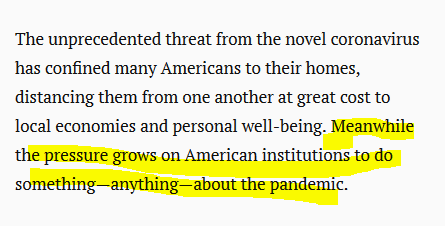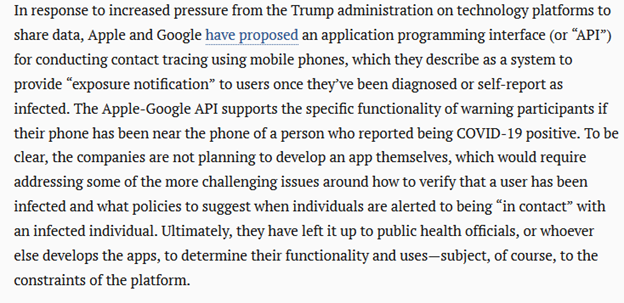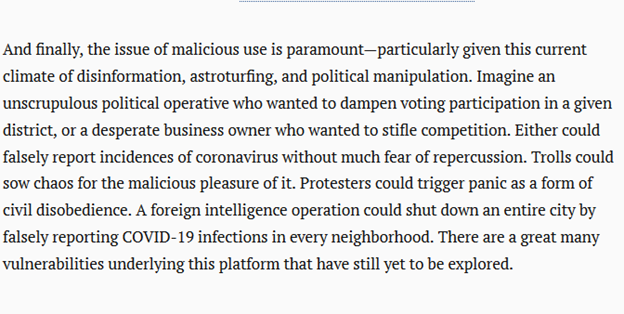The article does not provide a good justification for that position
Below I will go through the article paragraph-by-paragraph with my comments 1/n
brookings.edu/techstream/ina…
My colleague David Byrne(@dprbyrne) and I are working on how to help increase app adoption (and use) within Australia (and Canada)
We both believe that the app has promise, and it is worth giving a shot (or two!) 2/n
Note: the app is not a panacea, it is a compliment to traditional tools. This point was been made by Jason Bay (@jasonbay), who was involved in Singapore’s development: blog.gds-gov.tech/automated-cont… 3/n
If your take-away message is that the app may help but:
- it won't replace traditional tools
- false positives need to be minimized
- the app won’t catch all infections
- we need be vigilant about privacy protections
then good, you can stop here 4/n
It does not appear to be the take-away message of many folks, judging by how they cite this article on Twitter and in the news 5/n
(if you want to skip ahead to the critical parts, please begin at paragraph P6 below) 6/n
7/n

Again, the serious people advocating for this app do not see it as a substitute for traditional methods... 14/n

This gives a false impression that this is somehow a limitation relative to traditional measures 19/n
21/n
The undetected positives not reporting is an issue without the app
You aren't arguing against the best version of how app tracing can be implemented. Why not steelman it? 24/n

"If you need to be right before you move, you will never win."
37/n



















